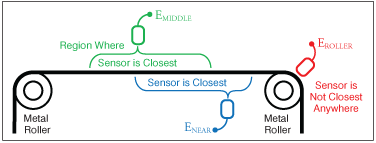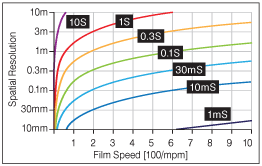Static Beat: How To Use Electrostatic Fieldmeters
- Published: November 01, 2010, By By Dr. Kelly Robinson Contributing Editor
Electrostatic fieldmeters are useful and versatile tools for solving static problems. Static charging problems are challenging to diagnose because the source of the charging often is at a different location than the observed sparks. A fieldmeter can identify locations where the static charge is high. It can display the polarity of the charge, which helps identify the source of the charging. A fieldmeter also can provide a quantitative estimate for the amount of static charge. Measuring charge and tracking the level through a process is a good way to find the source of static charging.
When using an electrostatic fieldmeter to diagnose a static charging problem or when selecting a fieldmeter for a specific application, three performance measures are important: range, spatial resolution, and response time.

Range | While the electric field formally is measured in volts per meter, one volt per meter is a very tiny field. Electric fieldmeters commonly display field in kilovolts per centimeter (kV/cm), kilovolts per inch (kV/in.), and a few models display the measured field only in volts. The distance, either centimeter or inch, is implied.
The electric field (E) is limited by the breakdown strength of air. So at atmospheric pressure, E is in the range of 0 to ±30 kV/cm or 0 to ±76 kV/in. For practical work, a reasonable upper limit is 20 kV/cm or 50 kV/in. Your fieldmeter should have a resolution of at least 1 kV/cm or 2.5 kV/in. so you can detect a 1 µC/m2 change in charge density on your film, which is practically significant.
Spatial Resolution | An electrostatic fieldmeter responds to charge where the sensor is the closest metal object. Figure 1 shows three measurement locations: EMIDDLE, taken midway between rollers; ENEAR, taken near a roller; and EROLLER, taken directly over a roller.

The electric fieldmeter reading EMIDDLE is the most reliable and stable because it responds to charges on the film in a symmetrical region that is half the distance between rollers. Reading ENEAR also responds to charges in a region that is approximately half the distance between rollers. However, the measurement geometry is not symmetric, and reading ENEAR will be more variable and less reliable than reading EMIDDLE. Reading EROLLER will be zero because the roller is the closest metal object to the film.
Response Time | The response time of an electric fieldmeter determines the size of charge variation that can be detected. Ideally, the response time (TRESPONSE) should be fast enough to detect charge patches with the same size as the spatial resolution (LRESOLUTION). The response time (TRESPONSE) depends on the film transport speed (UFILM) as in Equation 1. This relationship is plotted in Figure 2.

For example, on a 1-m film span, the spatial resolution (LRESOLUTION) of the fieldmeter will be approximately 0.5 m. With a film transport speed (USUB) of 300 mpm, the fieldmeter should have a response time no longer than 0.1 sec. A response time longer than this simply means that the fieldmeter will respond to the average charge on a larger length of film.
Use your electrostatic fieldmeter midway between rollers to measure static. It will respond to static charge over an area that is about half the film span. The response time of the meter determines the size of the smallest patch of charge that the meter can detect.
Static control expert Dr. Kelly Robinson, president of Electrostatic Answers, has 27+ years of experience in problem-solving and consulting. Contact him at 585-425-8158; This email address is being protected from spambots. You need JavaScript enabled to view it.; www.electrostaticanswers.com.





